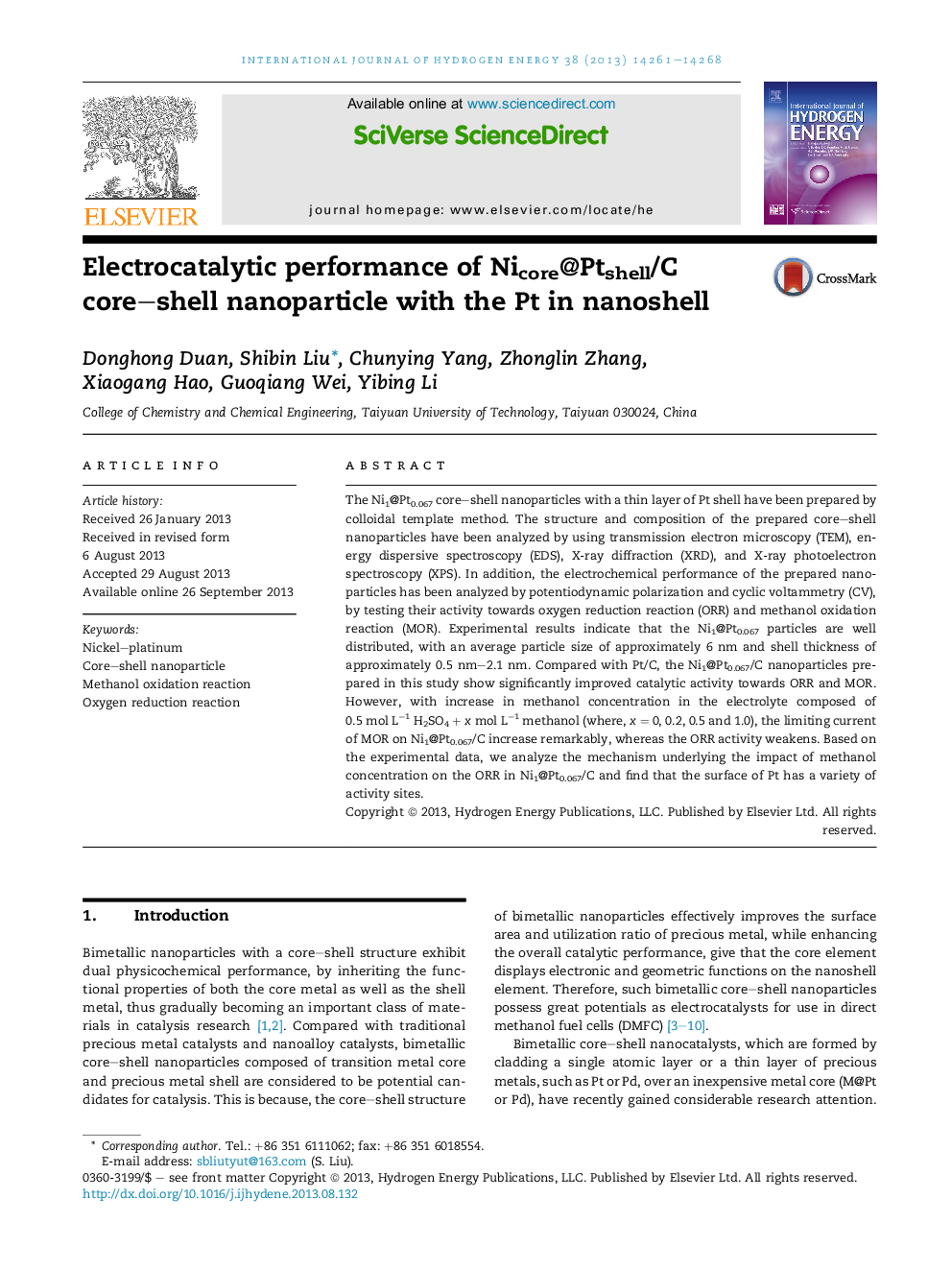| Article ID | Journal | Published Year | Pages | File Type |
|---|---|---|---|---|
| 1281386 | International Journal of Hydrogen Energy | 2013 | 8 Pages |
•A core–shell Ni1@Pt0.067 with thin Pt in shell was prepared.•The size of Ni1@Pt0.067 was approximately 6 nm with the shell was 0.5 nm–2.1 nm.•The activity of ORR and MOR on Ni1@Pt0.067 electrocatalyst is apparently improved.•There are three kinds of activity centers on the surface of nanoshell.
The Ni1@Pt0.067 core–shell nanoparticles with a thin layer of Pt shell have been prepared by colloidal template method. The structure and composition of the prepared core–shell nanoparticles have been analyzed by using transmission electron microscopy (TEM), energy dispersive spectroscopy (EDS), X-ray diffraction (XRD), and X-ray photoelectron spectroscopy (XPS). In addition, the electrochemical performance of the prepared nanoparticles has been analyzed by potentiodynamic polarization and cyclic voltammetry (CV), by testing their activity towards oxygen reduction reaction (ORR) and methanol oxidation reaction (MOR). Experimental results indicate that the Ni1@Pt0.067 particles are well distributed, with an average particle size of approximately 6 nm and shell thickness of approximately 0.5 nm–2.1 nm. Compared with Pt/C, the Ni1@Pt0.067/C nanoparticles prepared in this study show significantly improved catalytic activity towards ORR and MOR. However, with increase in methanol concentration in the electrolyte composed of 0.5 mol L−1 H2SO4 + x mol L−1 methanol (where, x = 0, 0.2, 0.5 and 1.0), the limiting current of MOR on Ni1@Pt0.067/C increase remarkably, whereas the ORR activity weakens. Based on the experimental data, we analyze the mechanism underlying the impact of methanol concentration on the ORR in Ni1@Pt0.067/C and find that the surface of Pt has a variety of activity sites.
